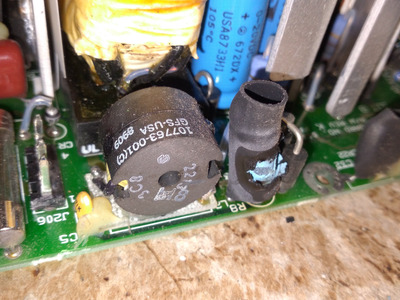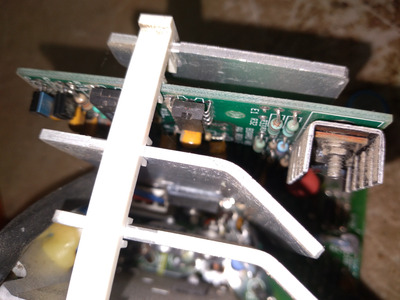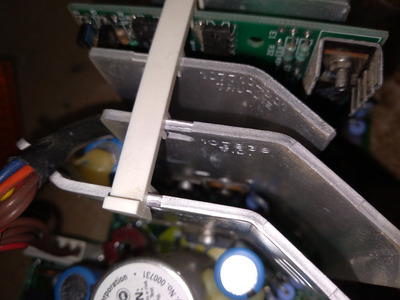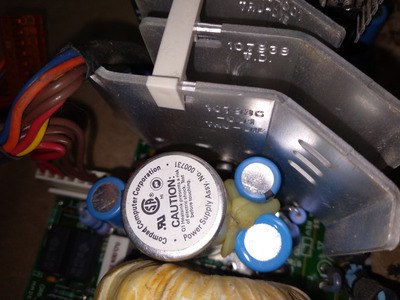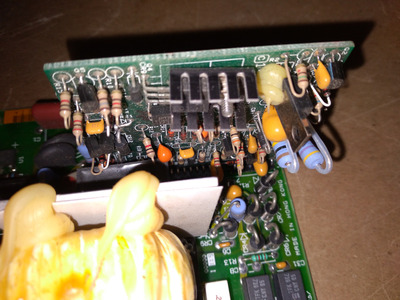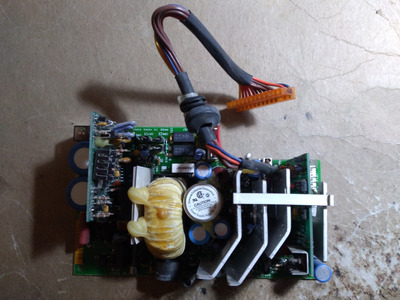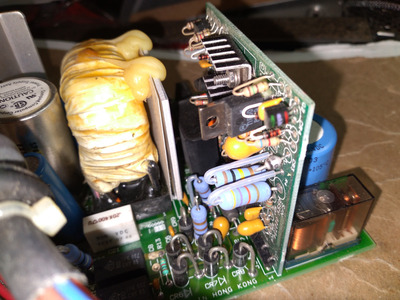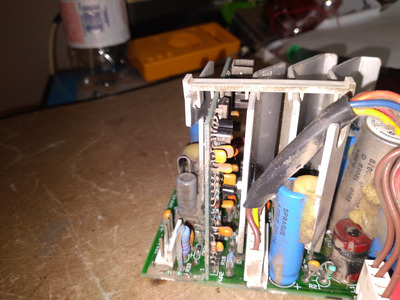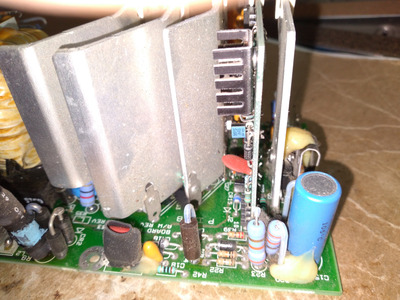These photos show the spare Compaq PSU. I have more that I'll attach shortly.
For a couple of good (well, to me!) reasons, I'm not likely to bother with the other supply.
One, you pretty well have to strip the body and chassis down to the level of a kit of parts and fasteners... seriously, you have to deconstruct the entire chassis to get the PSU out! It was a royal pain on the one machine that was already mostly disassembled... I'd really prefer to avoid doing it a second time and then some on the nearly fully *assembled* box.
Two, I'm in the midst of trying to configure the BIOS -- which is where this all started -- and I've reached a point where I'd honestly rather replace the chips with ones I have from another system that not only has a ROM-resident BIOS Setup, it's one that autoconfigures everything but hard drives! Since I've heard that almost all PC/AT-class machines have interchangeable BIOSes, I'm hoping I can make this work. I *will* try and boot with the old BIOS before swapping chips, simply to avoid introducing additional problems for myself ahead of time, 🤣 -- I just know it will fail to boot with the old chips.
Three, the intent with the drives was always to run one hard drive and one 1.44mb 3.5in floppy drive. While I somewhat agree with the purists, right now I don't have a simple way of creating 5.25in floppy disks -- or 720k 3.5in disks, for that matter -- and limiting myself to such drives would *severely* hamper the utility of the system. This machine was meant to be used, after all, and I want to honor that.
So I think my next steps are to (1) try and source a few replacement PLCC 286 CPUs, (2) try and work out the pinout of the old PSU, (3) make an adapter cable to allow the Toshiba T3100e PSU to connect to the Compaq motherboard, and (4) try and get it booting with the new PSU and a better BIOS.
At this point, the best help I could get is, if anyone knows the motherboard power connector pinout or is willing to suggest ways to suss it out, I'd appreciate it. It's a 13pin connector, marked "P101" on mobo silkscreen. It appears identical to the connector used in early Compaq Deskpro systems, at least from 8086 through 80386 generations; however, this connector appears entirely publicly undocumented from everything I can tell.
All I can work out so far is, pin1 is 0vGND, pin2 is 12v, pin3 is a key pin and is thus missing; working out the rest is quite a challenge because they all shunt to 0vGND until one receives a "power good" signal. Pins 4&5 are common at the mobo, as are Pins 6&7. Pin 8 is brought out alone. Pins9,10,11,12 are common, and Pin13 is brought out alone as well.
If anyone is familiar enough with the old Deskpro systems, the ones with 13pin PSU outputs, to provide their PSU pinout, I'd appreciate it. If anyone happens to know the pinout of *this* system, please share it! and if anyone has suggestions for reverse-engineering the pinout, please share whatever you've got!
